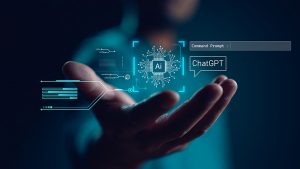An increasingly important strategy in the drive to decarbonize the built environment is digitization, delegates attending the recent Collisions tech conference in Toronto were told.
Siemens general manager Geoff Newman co-hosted a presentation on digital decarbonization strategies during the show. He later explained in an interview that it’s still possible to find workers with clipboards walking around building sites doing manual checks on building systems and entering data onto Excel sheets, but it’s a very primitive practice.
“To accelerate achieving your decarbonization targets, your ESG goals, digitalization is really going to help make it easier, quicker, more cost effective, to get to that ultimate goal,” said Newman.
The Siemens presentation at Collisions was billed as Future Forward: How Digitalization Can Decarb Buildings.
Newman said statistics have shown 75 per cent of buildings are energy inefficient, “so there’s a huge opportunity for us to accelerate that decarbonization through really focusing on energy efficiency.”
The importance of the digital strategy was highlighted in the Work Plan of the United Nations Group of Experts on Energy Efficiency for 2020-2021.
The panel addressed decarbonization and concluded, “Frontier digital innovations have significant potential to help policy-makers achieve their objectives through advancements in data, analytical capability and better connectivity.”
A Siemens white paper for the real estate industry also concluded, “All current trends are enabling a structured adoption of digitalization in the real estate sector and ensuring an improvement in our transition to a net-zero future.”
Those trends, Newman said, include a proliferation of digitally enabled energy-efficiency solutions, the use of non-proprietary open-data platforms where firms large and small exchange solutions and share knowledge, and the general growing focus on ESG goals with sustainability at the forefront.
“That’s the big thing. Everybody’s trying to achieve decarbonization.
“The biggest challenge in energy management, which ultimately leads to decarbonization, is first of all understanding what you can see. And now through smart sensors, smart meters that are being installed, all this data can be collated into one digital platform which enables the customers, the facility managers, the sustainability directors to make informed decisions where before they didn’t really know what they were consuming or where the issues were.”
A framework initiated by The World Green Building Council defines two paths for achieving net-zero carbon in real estate: construction and operations. Ideally a digitization strategy should be developed early on in the process when designing a building, with a digital twin of the building systems or a similar data resource created for use during operations.
Building systems can be monitored and recorded with thousands of sensors continuously delivering information.
It’s much more efficient than staff walking around with a flashlight trying to locate a problem, said Newman.
Without digitization, firms generally follow a reactive maintenance strategy, he said.
“They can’t get ahead of the game. If the boiler or the chiller fails, then they’re scrambling to replace it. And also, there could be a piece of equipment that has become uncalibrated or has drifted from its design, which is actually using more energy.”
The goal is to move to a predictive maintenance model, with AI playing a role.
The sector is moving so fast, Newman said, that when he talks to clients they launch into inquiries about what other clients are doing to decarbonize, asking what Siemens is doing in the Middle East, Asia or Europe.
Siemens has launched a product called an Xcelerator that’s an open digital business platform with certified contributors but also a new “ecosystem” of “hyperscalers” and other developers that are welcomed with their own solutions.
Everyone is checking in, he said, and determining where they fit.
“The key thing now is, how do you bring all the different software together, integrate them. We recognize that Siemens can’t solve all the problems.
“A university, as an example, they might have a phenomenal job. And their insight and learning can be then transferred to another of us just embarking on this journey. So we want to really create this kind of metaverse where you can collaborate and meet organizations that help you on your journey.”
Another major trend in the digitization sector is using master technology integrators, MTI, a global open platform where firms can determine what apps they can integrate with.
“It’s this master technology integrator that’s bringing in the right software and hardware to meet that customer’s outcome, whether that’s decarbonization, increased productivity or a better occupant experience as well.”




Recent Comments
comments for this post are closed